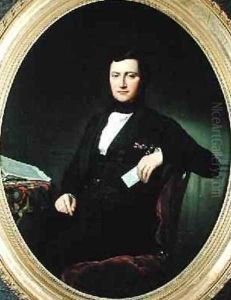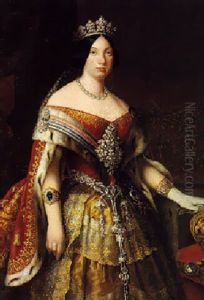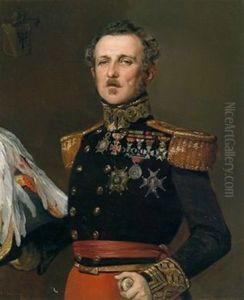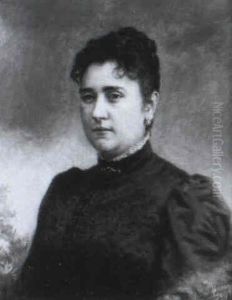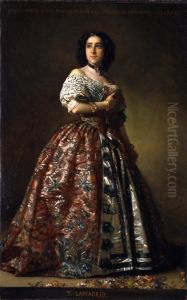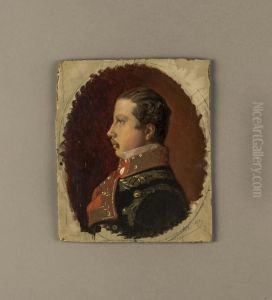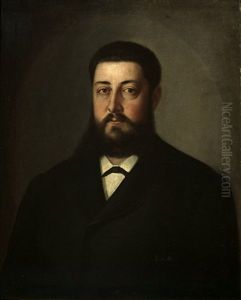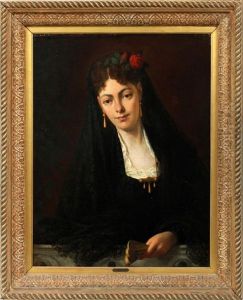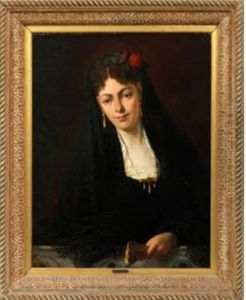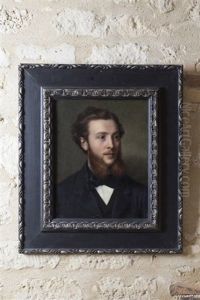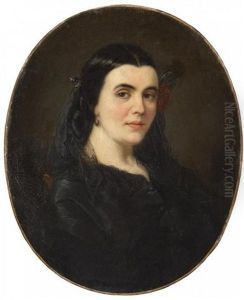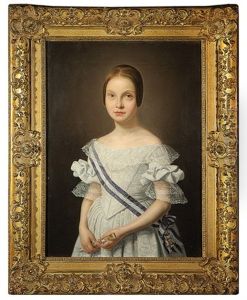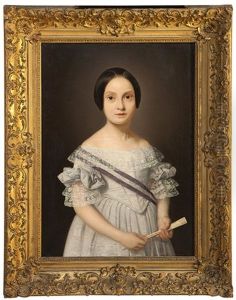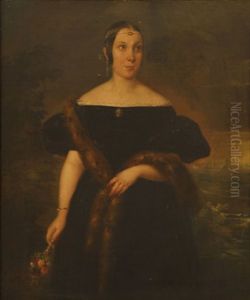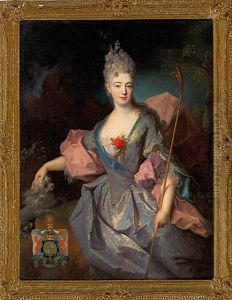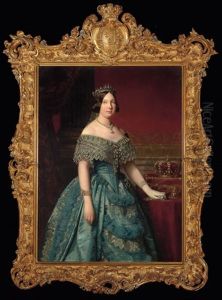Federico de Madrazo y Kuntz Paintings
Federico de Madrazo y Kuntz was a prominent Spanish painter of the 19th century, celebrated for his portraits and his role in the Spanish art scene of his time. Born on February 9, 1815, in Rome, Italy, into a family deeply entrenched in the arts, Madrazo's father, José de Madrazo y Agudo, was a notable painter, and his brothers, Luis de Madrazo and Raimundo de Madrazo y Garreta, were also acclaimed artists. This artistic environment profoundly influenced Federico, setting the stage for his future achievements in the world of art.
Madrazo's early education was under the tutelage of his father and later at the Royal Academy of Fine Arts of San Fernando in Madrid, where he demonstrated exceptional talent. His skills were further honed in Paris, where he studied under the guidance of Ingres, a leading Neoclassical painter known for his polished and meticulously detailed portraits. Ingres's influence is evident in Madrazo's work, particularly in his attention to detail and the clarity of his compositions.
Throughout his career, Madrazo gained widespread acclaim for his portraits, which were sought after by the Spanish aristocracy and royalty, including Queen Isabella II. His ability to capture the likeness and personality of his subjects made him a favorite among the high society of his time. In addition to portraits, he also painted religious and historical scenes, although these works are less known today.
Madrazo's contributions to Spanish art were not limited to his paintings. He served as the director of the Museo del Prado in Madrid, where he was instrumental in organizing and expanding its collections, and he also played a key role in the establishment of the modern Spanish school of painting. His influence extended beyond Spain, as he was involved in various international art circles, receiving numerous awards and honors throughout Europe.
Federico de Madrazo y Kuntz passed away on June 10, 1894, in Madrid, leaving behind a legacy that solidified his position as one of the most distinguished Spanish painters of the 19th century. His works continue to be celebrated for their elegance, technical skill, and the insight they provide into the society of his time.




